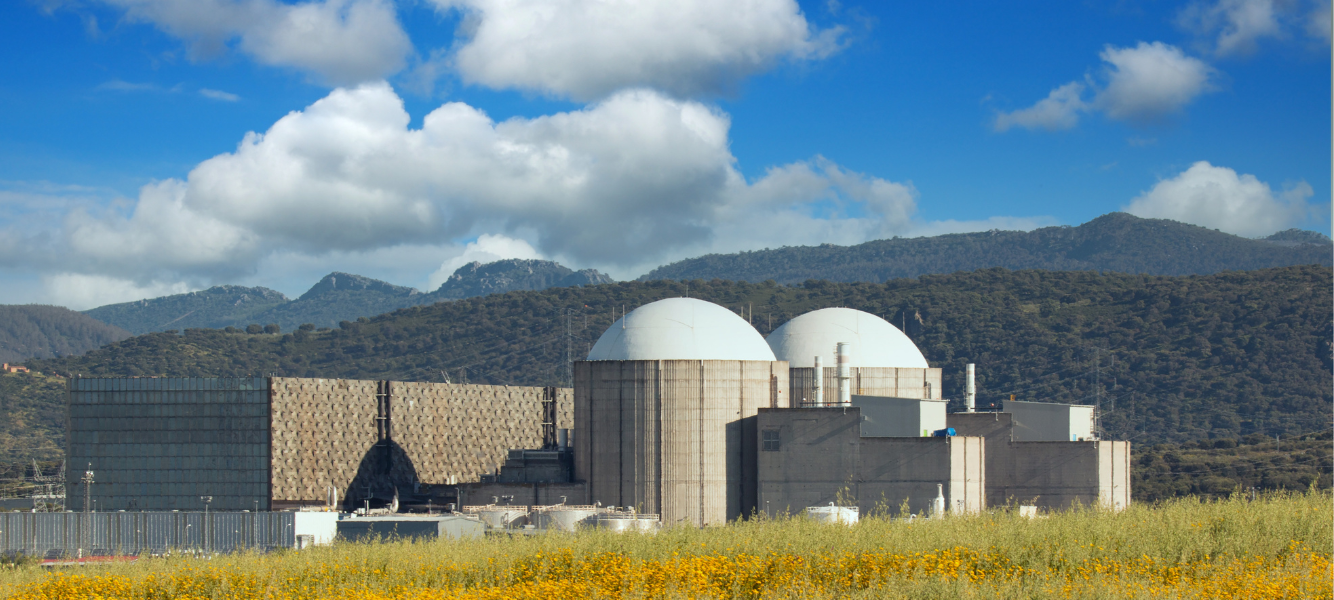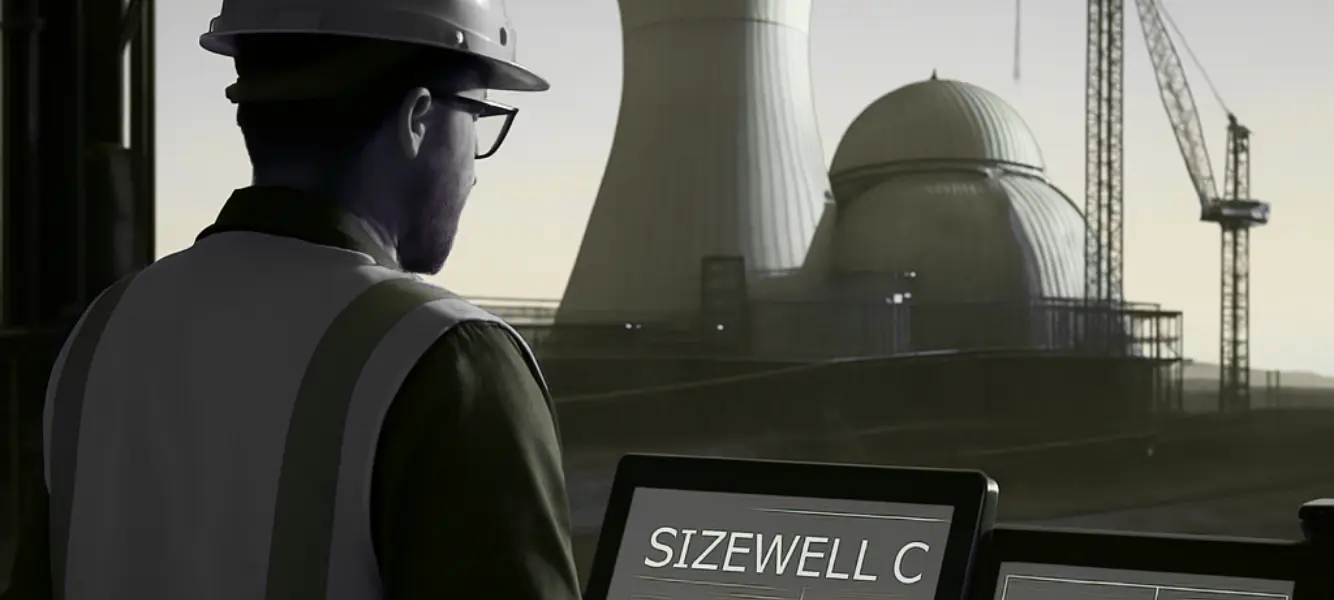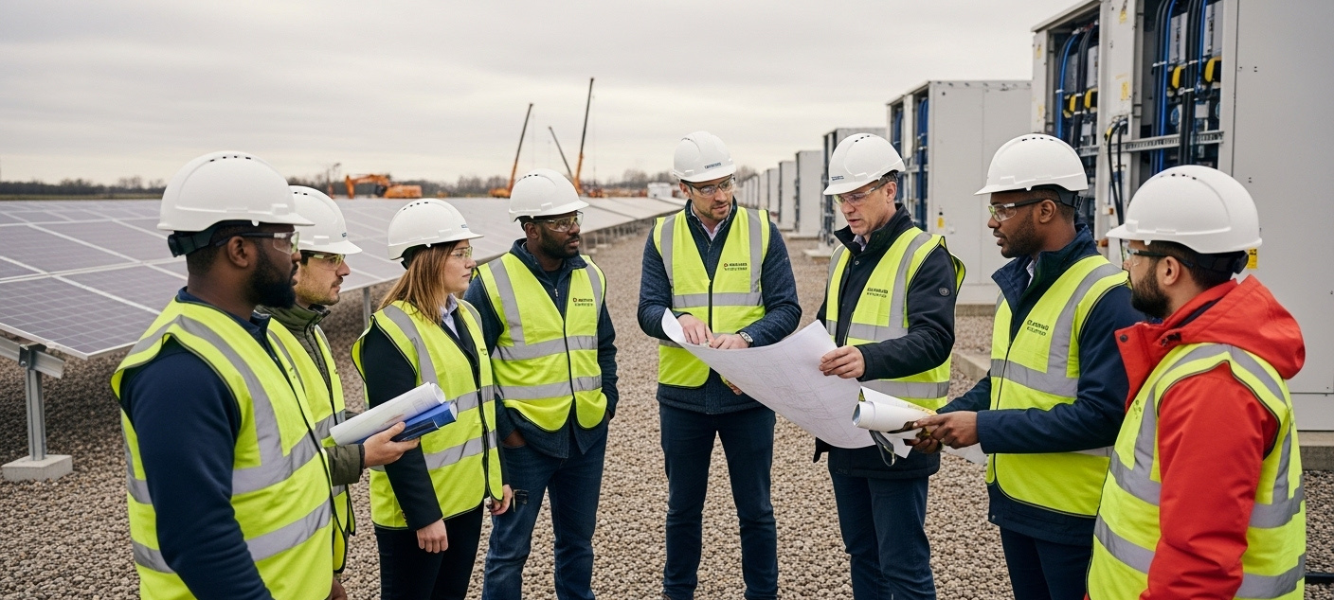The UK government has officially approved the Sizewell C nuclear power station project, marking a new chapter in the long history of the Sizewell nuclear site in Suffolk.
This green light, given on 22 July 2025, sets the stage for a third station at Sizewell alongside its predecessors, Sizewell A and Sizewell B.
Below we explore the full history of these nuclear power stations from major milestones and staffing through to economic and social impacts.
Sizewell A (1966–2006): Magnox Beginnings and Decommissioning
Sizewell A was the first nuclear station at the site, housing two Magnox gas-cooled reactors.
It operated successfully for 40 years (1966–2006) and is now undergoing decommissioning.
Key milestones in Sizewell A’s history include:
-
1958 – Sizewell site selected for a new nuclear power station by the local council, and plans announced by the CEGB to seek construction consent.
-
1960 – The UK Minister of Power grants approval for Sizewell A to proceed (no public inquiry was deemed necessary).
-
1961 – Construction of Sizewell A begins on 1 April, undertaken by a BNDC consortium (English Electric/Babcock & Wilcox/Taylor Woodrow). Initial budgeted cost was ~£56 million (inflating to £65 million by completion).
-
1965–66 – Reactor commissioning: Unit 1 achieved first criticality in June 1965, and first grid connection on 21 January 1966. Unit 2 followed with first power on 9 April 1966. The station entered full commercial operation by September 1966.
-
1967 – Sizewell A is formally opened on 7 April 1967 by the Earl of Stradbroke, marking the UK’s newest power station at the time. At full output it produced ~420 MW and, over its lifetime, generated about 110 TWh of electricity.
-
2006 – Sizewell A ceases generation on 31 December 2006, after reaching 40 years of service. Both reactors were permanently shut down as part of the planned Magnox fleet retirement.
-
2009 – Defuelling of Sizewell A begins. Used fuel is removed from reactor cores and transferred to on-site storage ponds for processing.
-
2014 – Final spent fuel is shipped off site (August 2014), and by February 2015 the station is declared completely fuel-free – removing 99% of the site’s radioactive hazard.
-
2025 – The turbine hall and adjoining structures are demolished as part of ongoing decommissioning (completed by June 2025 using innovative explosive techniques). The former turbine hall area – roughly the size of a football pitch – has been cleared, marking a major skyline change for the site.
-
Future – Residual structures (reactor buildings) will remain in a long-term “care and maintenance” state before final dismantling. The entire Sizewell A site is projected to be fully cleared by around 2077, after which the land can be released for other uses.
Sizewell B (1995–Present): Britain’s Only PWR and Extended Operation
Sizewell B is the UK’s only pressurised water reactor (PWR) nuclear station, and the second plant built at Sizewell.
It has a single 1,188 MWe PWR unit that began operation in 1995.
Sizewell B continues to operate today and is slated for a life-extension to 2055.
Key milestones in Sizewell B’s story:
-
1983 – A public planning inquiry into building the first PWR in the UK (at Sizewell) commences, lasting almost two years. This was the largest-ever inquiry in UK history, with extensive local and national evidence presented.
-
1987 – After the inquiry’s conclusion and government deliberations, plans for Sizewell B are approved by the Secretary of State. This approval paves the way for constructing Britain’s first PWR power station.
-
1988 – Main construction works begin on 18 July 1988. Sizewell B is the first of a planned fleet of four PWRs (the only one ultimately built, as the others were later cancelled).
-
1995 – Sizewell B achieves first criticality and is connected to the grid in February 1995, beginning to generate power. It officially enters commercial operation on 14 February 1995. The project was a success in project management terms – completed only about one month behind the original schedule and for slightly under its £2.03 billion budget (in 1987 money).
-
2006 – Following a government energy review, new nuclear build is put back on the agenda (having been ruled out after Sizewell B). Sizewell B remains the newest UK reactor for nearly three decades (no new plants were built between 1995 and the 2010s).
-
2015 – The Office for Nuclear Regulation approves Sizewell B’s periodic safety review, confirming that the plant can continue to operate safely for at least another decade (to 2025). By this time, Sizewell B had run for ~20 years and produced electricity for millions of homes in the southeast.
-
2022 – EDF Energy announces plans for a 20-year life extension of Sizewell B, proposing to operate the plant until 2055 instead of the original 2035 closure date. A review process is initiated to secure the necessary upgrades, safety approvals and investment for this Long-Term Operation program. EDF’s Chief Nuclear Officer noted that extending Sizewell B’s life “will protect jobs and… UK energy security” by bridging the gap as older AGR reactors retire.
-
2025 – Sizewell B completes nearly 30 years of operation. EDF confirms the station’s performance has been excellent, with output making Sizewell B one of the most efficient plants in the fleet. Plans for the life-extension are progressing, and the station’s next major milestone will be securing regulatory approval to operate beyond 2035 (anticipated by the late 2020s).
(Sizewell B is currently licensed to operate until at least 2035, pending the life-extension. EDF has stated it expects to implement upgrades that would allow the reactor to run for a total of 60 years, similar to PWRs in the United States)
Sizewell C (Planned): Twin EPRs and the 2025 Go-Ahead
Sizewell C is a proposed twin-reactor nuclear power station to be built adjacent to Sizewell B.
It will feature two French-designed EPR reactors (3.2 GW total capacity) and is designed as a near-replica of Hinkley Point C.
After years of planning, Sizewell C reached a final investment decision in July 2025, enabling full construction to begin.
The journey of Sizewell C so far:
-
2009 – The UK government identifies Sizewell as one of eight sites suitable for new nuclear power stations, as part of a national policy statement under then-Energy Secretary Ed Miliband. This put Sizewell C on the map for future development.
-
2010s – EDF Energy develops initial proposals for Sizewell C in parallel with Hinkley Point C. The project was originally a joint venture with China General Nuclear (CGN) holding a 20% stake. Public consultations and environmental assessments take place throughout the 2010s, and the design mirrors the EPR units being built at Hinkley.
-
May 2020 – EDF’s subsidiary (NNB Generation Company SZC Ltd) submits a site license application and a Development Consent Order application for Sizewell C. Regulatory review of the safety case and formal examination of the planning application begin, with input from local communities and stakeholders during 2020–21 (despite COVID-19 restrictions).
-
July 2022 – The UK Secretary of State grants Development Consent for Sizewell C on 20 July 2022, officially approving the planning application. This followed an Examination and recommendation by the Planning Inspectorate, and marked a key government go-ahead for the project’s construction phase.
-
September 2022 – The British government buys out CGN’s share in Sizewell C amid security concerns, making the project a wholly UK/EDF partnership. In November 2022, the government commits the first direct funding: a £679 million investment to become a 50% shareholder alongside EDF. This was the first state investment in a UK nuclear plant in decades, under a new regulated asset base (RAB) financing model.
-
2023 – Early works and site preparations continue at Sizewell (such as ground investigations and infrastructure planning) while the project seeks additional investors. The government’s Future Nuclear enabling funds support training and site procurement so that, once the final decision is made, major construction can ramp up quickly. By late 2023, negotiations are underway with potential equity partners and lenders.
-
22 July 2025 – Final Investment Decision is signed by Energy Secretary Ed Miliband, giving Sizewell C the final go-ahead to move into full construction. The £38 billion project’s equity is now agreed: the UK government will take a 44.9% stake, alongside 20% for Canada’s Caisse de dépot et placement du Québec, 15% for UK utility Centrica, 7.6% for Amber Infrastructure, and the remainder (~12.5%) for EDF. This made the UK government the largest single shareholder, underscoring the plant’s strategic importance. (France’s export credit agency will also guarantee up to £5 billion in debt for EDF’s share.)
-
July 2025 – With the final go-ahead secured, a new era of construction begins at Sizewell. The project is expected to supply ~6 million homes when operational, with a target commissioning date in the mid-to-late 2030s. Sizewell C becomes only the second new nuclear plant built in Britain in nearly 30 years (after Hinkley Point C), signalling a broader nuclear resurgence. Industry leaders hailed the decision; Energy Secretary Ed Miliband stated this investment “delivers a new golden age of nuclear” and will help “bring bills down for good” by reducing reliance on volatile fossil fuels.
(Future milestones for Sizewell C will include pouring first concrete, reactor installation, grid connection, and eventual operation for 60+ years. The final site clearance of Sizewell C would occur next century, given its intended lifespan.)
Workforce and Staffing Breakdown by Project Phase
Building and operating nuclear power stations requires a substantial and skilled workforce.
Below is a breakdown of staffing for each Sizewell station during construction, operation, and (where applicable) decommissioning – including workforce size and the types of roles involved:
| Station | Phase | Workforce (approx.) | Key Roles / Skills |
| Sizewell A | Construction (1960s) | Several hundred workers at peak (exact figures not recorded publicly), drawn from UK construction firms and engineering teams. | Civil engineers, construction labourers, fitters, welders, project managers. |
| Sizewell A | Operation (1966–2006) | “More than 300” full-time staff during operations, gradually reducing post-closure. | Reactor operators, maintenance technicians, electrical and mechanical engineers, safety inspectors, support staff. |
| Sizewell A | Decommissioning (2007–present) | ~100 staff in early decommissioning; down to ~50 in long-term care-and-maintenance phase. (Most fuel removal work was done by 2014.) | Decommissioning engineers, waste management specialists, radiation protection technicians, project supervisors. |
| Sizewell B | Construction (1988–1995) | Over 10,000 workers involved over the project, with peak on-site workforce exceeding 5,000 at one time. | Wide range of skills from “building labourers to PhD-level nuclear physicists” (civil contractors, steelworkers, pipefitters, electricians, nuclear engineers, etc.). |
| Sizewell B | Operation (1995–present) | ~500 permanent staff (full-time) run the station, supplemented by ~200+ contractors during maintenance outages. (Includes ~45 apprentices at any time.) | Licensed reactor operators, control room technicians, maintenance engineers (electrical, mechanical, instrumentation), safety and environmental specialists, apprentices/trainees. |
| Sizewell B | (Future) Decommissioning | TBD (Sizewell B is planned to operate until ~2055, so decommissioning plans are not yet staffed). Past experience suggests a few hundred roles for defuelling and dismantling, tapering to a small monitoring team in care & maintenance. | (To be determined; likely required roles in reactor decommissioning, waste handling, and site remediation, similar to Sizewell A’s decommissioning.) |
| Sizewell C | Construction (2025–2030s) | ~10,000 jobs at peak construction, including 1,500 apprenticeships for young workers. A significant portion of the workforce is pledged to come from the local region (at least one-third, ~2,600 people, from East Anglia). | Construction and engineering roles: civil engineers, heavy equipment operators, steel erectors, welders, electricians, project managers, plus trainee apprentices across technical trades. Also nuclear engineers and quality inspectors for reactor installation. |
| Sizewell C | Operation (expected ~2030s onward) | ~900 permanent staff will operate Sizewell C during its 60-year lifespan. (This figure is in line with the operational workforce at Hinkley Point C and reflects two large EPR reactors.) | Plant operation and support roles: reactor operators and supervisors, electrical/mechanical engineers, control & instrumentation engineers, chemists, safety and environment officers, security personnel, and administrative/support staff. |
| Sizewell C | (Future) Decommissioning | TBD (2070s–2080s) – Workforce will likely be substantial during post-operation defuelling and dismantling (several hundred skilled workers), diminishing to a small caretaking crew thereafter. | Decommissioning project managers, waste engineers, decontamination specialists, demolition crews, environmental monitoring experts. |
Economic and Social Impact: Jobs, Training and Regional Benefits
The Sizewell projects have had a profound economic and social impact on East Suffolk, creating thousands of jobs and spearheading workforce development initiatives locally.
Long-Term Employment:
Sizewell A and B provided stable, well-paid jobs for the community.
Sizewell A employed around 300 staff for decades, supporting the local economy of Leiston and surrounding areas.
Sizewell B currently employs about 500 full-time staff, with an annual payroll contributing roughly £40 million to the local economy.
Many of Sizewell B’s current leaders began their careers as local apprentices, reflecting a strong “grow-your-own” staffing ethos.
Construction Booms:
The building phases brought surges of economic activity.
During Sizewell B’s construction (1987–95), high employment levels were a notable feature.
Peak on-site jobs exceeded 5,000, although a large portion of the skilled workforce had to be brought in from outside Suffolk.
This influx boosted demand for local housing, services, and supply contracts. However, the end of construction also meant a sudden reduction in jobs; studies in the 1990s tracked how local workers transitioned after the project (some found new work at other sites, while others faced redundancy).
These boom-bust employment cycles have informed planning for Sizewell C.
Sizewell C Job Creation:
The new Sizewell C project is explicitly designed to maximise local employment benefits.
It is slated to create ~10,000 jobs at peak build, and EDF has committed that at least 2,600 of those will be filled by East Anglia residents.
In late 2024, Sizewell C signed agreements to guarantee 500 jobs each for the towns of Ipswich and Lowestoft during construction. This is part of a strategy to ensure the surrounding region directly benefits from the project’s “colossal” job opportunities.
Local job fairs, skills hubs and outreach programs are underway to prepare the workforce for these roles. As local MP Jack Abbott remarked, this kind of commitment is “an example of ambitious leadership delivering for local people”, offering training, upskilling and long-term careers in clean energy.
Skills and Training Initiatives:
Across all Sizewell projects, training the next generation has been a priority.
Sizewell B has an ongoing apprentice program (around 40–50 apprentices at any time) to bring young people into engineering roles. For Sizewell C, EDF and partners have launched a comprehensive skills package – including partnering with local colleges to expand engineering courses and create new Centers of Excellence (e.g. in welding and electrical engineering).
A new post-16 Energy Skills College is set to open by 2027 to feed local students into Sizewell C careers. The project’s dedicated Jobs Service and Young Sizewell C programs are already linking local candidates to training and employment opportunities on the project.
By investing in education and apprenticeships, Sizewell C aims to leave a legacy of a higher-skilled regional workforce.
Local Supply Chain and Investment:
The nuclear stations have also spurred wider economic benefits through their supply chains.
Sizewell A’s construction in the 1960s involved predominantly British firms for reactor equipment and construction. In the present day, Sizewell C is expected to direct £2 billion of contracts to Suffolk-based businesses during construction.
Already, over £45 million in contracts have been awarded to local companies in preparatory work, from civil engineering firms to aggregate suppliers.
This local spending multiplies the economic impact in terms of jobs in manufacturing, logistics, hospitality and other sectors supporting the project.
Communities have also benefited from funding for infrastructure improvements and community programs funded by Sizewell’s developers (for example, housing funds, education grants, and environmental mitigation initiatives in East Suffolk).
Overall, the Sizewell nuclear power stations – from A to B to C – illustrate the evolving role of nuclear energy in Britain’s economy.
They have transitioned from first-generation technology providing post-war jobs, through late-20th-century innovations, and now into a 21st-century clean energy investment.
With Sizewell C’s green light in July 2025, Suffolk’s “nuclear coast” is set to remain a powerhouse of employment, skills development, and low-carbon power for decades to come.


















